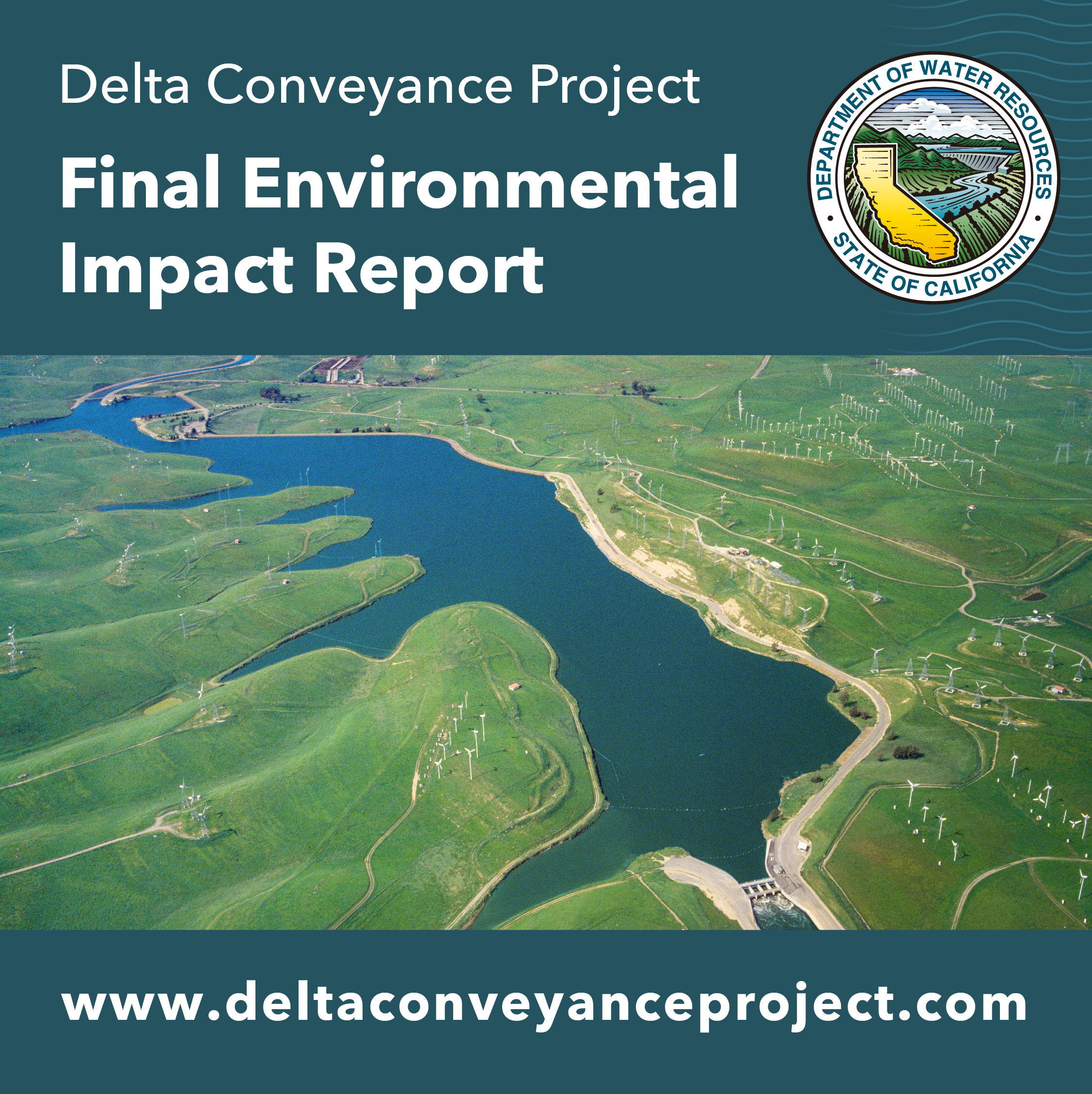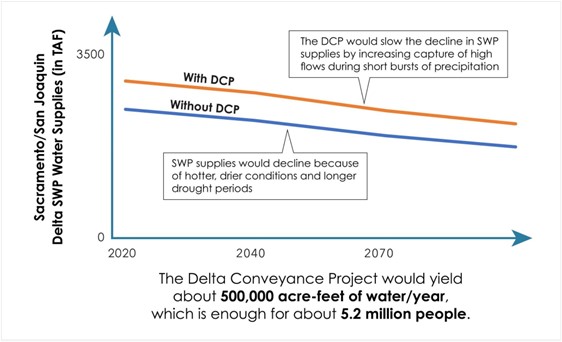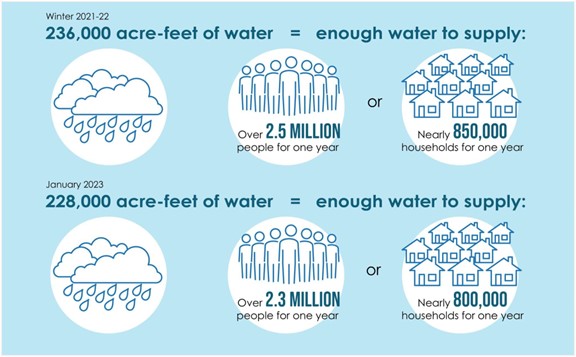Delta Conveyance Project Final Environmental Impact Report cover.
The Department of Water Resources today released the Final Environmental Impact Report (EIR) for the proposed Delta Conveyance Project, advancing an essential piece of the state’s strategy to protect water access for millions of Californians. It was redesigned following public input and Governor Newsom’s pledge of rightsizing the project to one tunnel to better support both environmental and water supply needs.
By 2040, California is expected to lose 10% of its water supply due to hotter temperatures. During January’s atmospheric rivers, the Delta Conveyance Project could’ve captured enough water for 2.3 million peoples’ yearly usage. Until this year, the state faced its three driest years on record. Extreme weather whiplash will result in more intense swings between droughts and floods. California’s 60-year-old State Water Project infrastructure is not built for these climate effects.

The Delta Conveyance Project would modernize the state’s water infrastructure to:
- Capture and move more water during wet seasons to better endure dry seasons;
- Minimize future losses from climate-driven weather extremes;
- Protect against earthquakes disrupting water supplies;
- Continue meeting regulatory water quality and fishery requirements, and add new operating rules for further fishery protections;
- Includes a Community Benefits Program to ensure local communities get the means and resources to achieve tangible and lasting benefits.
“Climate change is threatening our access to clean drinking water, diminishing future supplies for millions of Californians – doing nothing is not an option. After the three driest years on record, we didn’t have the infrastructure to fully take advantage of an exceptionally wet year, which will become more and more critical as our weather whiplashes between extremes,” said Governor Gavin Newsom. “This project is essential to updating our water system for millions of Californians. This new approach, redesigned following community and environmental input, is how we can build a California of the future.”
This project is key to California’s Water Resilience Portfolio and Governor Newsom’s Water Supply Strategy.
Throughout development of the proposed project, DWR heard from local communities and used feedback to address concerns, with some of these recommendations including: avoiding the central Delta, avoiding forebays and barge landings, reducing pile driving, undergrounding power near sandhill crane habitat, minimizing acreage needed to store tunnel material, and minimizing the project footprint.
The proposed project also includes a Community Benefits Program, with the goal to identify and implement local projects that can provide tangible and lasting local benefits.
“Modernized infrastructure in the Delta is a missing link to the state’s most affordable and reliable source of water,” said Karla Nemeth, Director of the California Department of Water Resources. “Improving water use efficiency and increasing local water supplies is an important compliment to the State Water Project to ensure that a climate proof water supply remains affordable now and into the future.”

The environmental review included a 142-day public comment period in which DWR received more than 700 letters and 7,000 individual comments. Outreach began in 2020 and has included a multitude of webinars, workshops, briefings, multi-language informational materials, email updates, videos, animations, tabling at local events, and a comprehensive Delta survey. The Final EIR responds to all substantive comments.
“We worked hard to address local concerns and made considerable improvements to minimize terrestrial species effects, wetland impacts, noise, air quality impacts, traffic, power needs, boating and waterway effects, land disturbance, and overall project footprint," said Carrie Buckman, the project’s Environmental Program Manager.
An Environmental Impact Report evaluates and discloses to public agency decision makers and the public the potential environmental impacts, and identifies feasible mitigation measures to avoid, minimize, or otherwise offset potentially significant impacts.
Proposed responses to comments, as well as the Final EIR and accompanying informational resources, can be accessed at www.deltaconveyanceproject.com. This action signifies the last step DWR is required to take under the California Environmental Quality Act (CEQA) prior to deciding whether to certify the EIR and approve the proposed project.
The Final EIR was prepared by DWR as the lead agency to comply with the requirements of CEQA. The Final EIR is presented in two volumes: 1) the contents of the entire Draft EIR, as revised, and 2) all comments received on the Draft EIR and responses to substantive comments.
At the conclusion of the CEQA process, DWR will determine if the Final EIR has been completed in compliance with CEQA and whether to certify that the Final EIR reflects DWR's independent judgment and analysis. Following certification of the Final EIR, DWR will then use the information in it to assist in determining whether to approve the proposed project, an alternative or no project. Learn more about the CEQA process here. Find a full list of informational materials here.
Contact:
Public Affairs Office, Department of Water Resources
